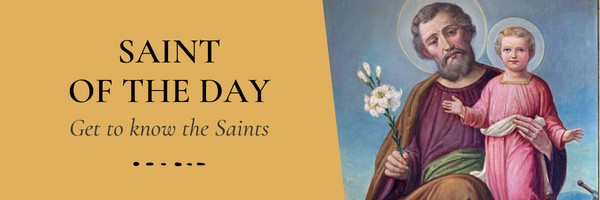We ask you, urgently: don't scroll past this
Dear readers, Catholic Online was de-platformed by Shopify for our pro-life beliefs. They shut down our Catholic Online, Catholic Online School, Prayer Candles, and Catholic Online Learning Resources essential faith tools serving over 1.4 million students and millions of families worldwide. Our founders, now in their 70's, just gave their entire life savings to protect this mission. But fewer than 2% of readers donate. If everyone gave just $5, the cost of a coffee, we could rebuild stronger and keep Catholic education free for all. Stand with us in faith. Thank you.Help Now >
St. Simon the Apostle
FREE Catholic Classes
The name of Simon occurs in all the passages of the Gospel and Acts, in which a list of the Apostles is given. To distinguish him from St. Peter he is called ( Matthew 10:4 ; Mark 3:18 ) Kananaios , or Kananites , and Zelotes ( Luke 6:15 ; Acts 1:13 ). Both surnames have the same signification and are a translation of the Hebrew qana (the Zealous). The name does not signify that he belonged to the party of Zealots, but that he had zeal for the Jewish law, which he practised before his call. Jerome and others wrongly assumed that Kana was his native place; were this so, he should have been called Kanaios . The Greeks, Copts, and Ethiopians identify him with Nathanael of Cana; the first-mentioned also identify him with the bridegroom of the marriage of Cana, while in the "Chronicon paschale" and elsewhere he is identified with Simon Clopas.
The Abyssinians accordingly relate that he suffered crucifixion as the Bishop of Jerusalem, after he had preached the Gospel in Samaria. Where he actually preached the Gospel is uncertain. Almost all the lands of the then known world, even as far as Britain, have been mentioned; according to the Greeks, he preached on the Black Sea, in Egypt, Northern Africa, and Britain, while, according to the Latin "Passio Simonis et Judae" -- the author of which was ( Lipsius maintains) sufficiently familiar with the history of the Parthian Empire in the first century -- Simon laboured in Persia, and was there martyred at Suanir. However, Suanir is probably to be sought in Colchis. According to Moses of Chorene, Simon met his death in Weriosphora in Iberia; according to the Georgians, he preached in Colchis. His place of burial is unknown.
Concerning his relics our information is as uncertain as concerning his preaching. From Babylon to Rome and Toulouse we find traces of them; at Rome they are venerated under the Altar of the Crucifixion in the Vatican. His usual attribute is the saw, since his body was said to have been sawed to pieces, and more rarely the lance. He is regarded as the patron of tanners. In the Western Church he is venerated together with Jude (Thaddaeus) ; in the East separately. The Western Church keeps his feast on 28 October; the Greeks and Copts on 10 May.
Join the Movement
When you sign up below, you don't just join an email list - you're joining an entire movement for Free world class Catholic education.
- Advent / Christmas
- 7 Morning Prayers
- Mysteries of the Rosary
- Litany of the Bl. Virgin Mary
- Popular Saints
- Popular Prayers
- Female Saints
- Saint Feast Days by Month
- Stations of the Cross
- St. Francis of Assisi
- St. Michael the Archangel
- The Apostles' Creed
- Unfailing Prayer to St. Anthony
- Pray the Rosary
![]()
Copyright 2025 Catholic Online. All materials contained on this site, whether written, audible or visual are the exclusive property of Catholic Online and are protected under U.S. and International copyright laws, © Copyright 2025 Catholic Online. Any unauthorized use, without prior written consent of Catholic Online is strictly forbidden and prohibited.
Catholic Online is a Project of Your Catholic Voice Foundation, a Not-for-Profit Corporation. Your Catholic Voice Foundation has been granted a recognition of tax exemption under Section 501(c)(3) of the Internal Revenue Code. Federal Tax Identification Number: 81-0596847. Your gift is tax-deductible as allowed by law.









